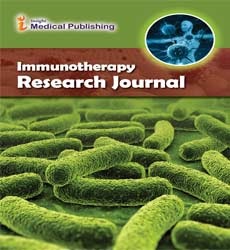Undergraduate Medical Education and Curricula
Sateesh Arja*
Avalon University School of Medicine, Curacao
- *Corresponding Author:
- Sateesh Arja
Executive Dean, Avalon University
School of Medicine, Curacao.
Tel: (5999) 6965682
E-mail: sarja@avalonu.org
Received date: July 28, 2017; Accepted date: July 29, 2017; Published date: August 07, 2017
Citation: Arja S (2017) Undergraduate Medical Education and Curricula. Immunother Res. Vol. 1 No. 1:3
Medical schools across the world are using different models of curricula in undergraduate medical education. The varieties of curricula that are being used in medical education include, but are not limited to, traditional discipline-based curriculum, integrated curriculum, organ-based curriculum, competencybased curriculum, problem-based learning curriculum and community oriented curriculum. Each curriculum has advantages and disadvantages. Some medical schools have mixed curricula where they have two types of curriculum combined. For example, some schools, even though they have organ-based curriculum, also use teaching methods of problem-based learning.
The traditional discipline-based curriculum is still being used in some medical schools across the globe, including India, some other Asian countries, and some Caribbean medical schools. Here students are not exposed to clinical education or patients until the third year of their medical program. During the first two years of their medical education, the curriculum is completely focused on basic sciences.
In problem-based learning students are divided into groups of 8 to 12. Students will be given a clinical case. Based on the clinical case students are required to do self-study and gather the information. Then all students in the group are required to share the information which they gathered. The themes which can be fostered with problem-based learning include self-study, problem-solving, and critical thinking. The most commonly used approach for problem-based learning is a seven-step approach which includes Step 1: Clarify terms and concepts not readily comprehensible, Step 2: Define the problem, Step 3: Analyze the problem, Step 4 Draw a systematic inventory of the explanations inferred from step 3, Step 5: Formulate learning objectives, Step 6: Collect additional information outside the group and Step 7: Synthesize and test the newly acquired information [1]. Many medical schools in Middle Eastern countries are solely using PBL curriculum for medical education.
The integrated curriculum is a well-recognized approach in medical education curriculum [2]. The integrated curriculum is one of the curricular designs in medical education meant to bring horizontal and vertical integration in the curriculum. Horizontal integration is achieved by coordinating and integrating among basic sciences courses and also among clinical sciences courses. Vertical integration is achieved by integrating Clinical Sciences and Clinical education in the Basic Sciences and vice versa. Organbased curriculum is the curriculum where medical education runs according to each organ system with both horizontal integration and vertical integration. Organ-based curriculum is one of the most popular curricula for undergraduate medical education in American medical schools and followed in very few Caribbean medical schools.
Competency-based curriculum is one of the recent designs of the curriculum which is followed in medical education [3]. Competency-based training is a method of training where students are assessed by the progression of the students demonstrating their ability to perform certain tasks [4]. The most commonly followed competencies are described as competencies by ACGME (Accreditation Commission of Graduate Medical Education). These competencies of ACGME are comparable to competencies of undergraduate medical education [5]. The other commonly followed competencies are as described by the GMC Council as required competencies for basic medical doctors. A lot of medical schools developed their institutional learning objectives in accordance with competencies as described by ACGME.
The other approach in undergraduate medical education in recent times is a community-based curriculum where a community approach is of primary importance [6]. Here, students are involved in community services and primary care centers from the beginning and throughout the program. Students are committed to community health or public health and preventive services. This curriculum is still in its initial stages. Some schools have implemented it as a pilot project.
Conflict of Interest
None
References
- Schmidt HG (1983) Problem-based learning: Rationale and description. Med Educ 17: 11- 16
- Atwa HS, Gouda EM (2014) Curriculum integration in medical education: A theoretical review. Intel Prop Rights 2: 113.
- Wouter K, Jos WS, Elisabeth AVH, Janke CS (2013) The effect of implementing undergraduate competency-based medical education on students’ knowledge acquisition, clinical performance and perceived preparedness for practice: A comparative study. BMC Med Educ 13: 76.
- Alexandra B, Janet G (2012) Competency-based training: Who benefits? Postgrad Med J 89: 107-110.
- (2008) Recommendations for pre-clerkship clinical skills education for undergraduate medical education. Task Force on the Clinical Skills Education of Medical Students. Association of American Medical Colleges, Washington, D.C., United States.
- Hamad B (1991) Community-oriented medical education: What is it? Med Educ 25: 16-22.
Open Access Journals
- Aquaculture & Veterinary Science
- Chemistry & Chemical Sciences
- Clinical Sciences
- Engineering
- General Science
- Genetics & Molecular Biology
- Health Care & Nursing
- Immunology & Microbiology
- Materials Science
- Mathematics & Physics
- Medical Sciences
- Neurology & Psychiatry
- Oncology & Cancer Science
- Pharmaceutical Sciences
